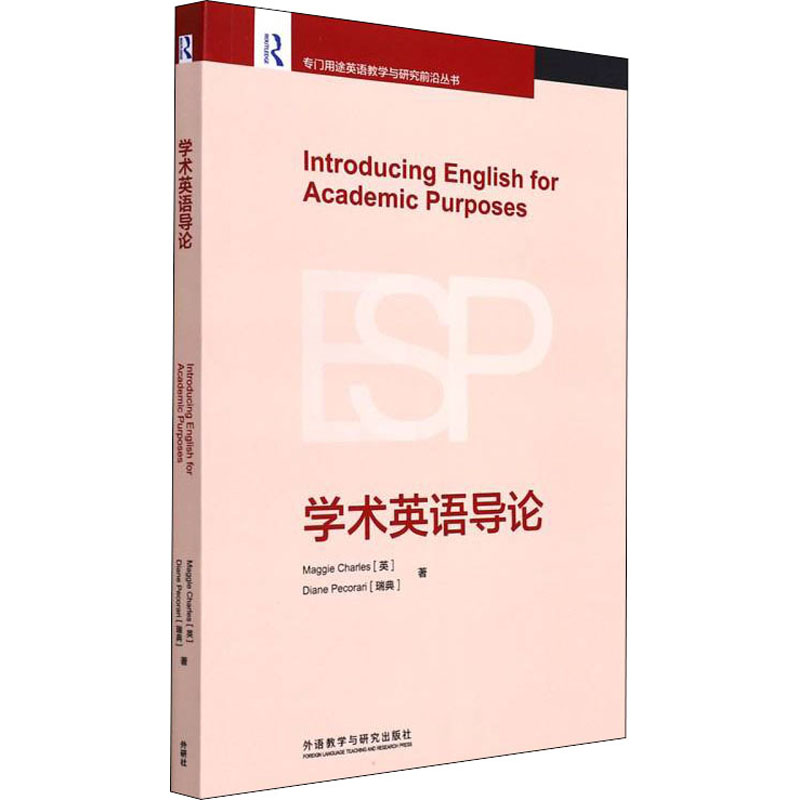内容简介
《学术英语导论》从宏观到微观系统地描绘了学术英语领域的概貌,包括学术英语的定义、学科定位、课程设计、教材选取与编写、话语特征、词汇特征、评估与反馈等内容,旨在引导初涉学术英语教学领域的教师开展教学实践,或进行科学研究。 全书共12章,分为三部分。第一部分介绍学术英语这一领域的基本情况,包括学术英语的定义和研究范围、学术英语使用及教学的全球背景、学校教育视角下的学术英语。第二部分介绍学术英语课程规划,包括学术英语教学与研究方法、学术英语课程设计、学术英语教材选取与编写。第三部分结合教学实例,介绍学术英语的具体特点及其教学方法,以及测评手段,涉及学术英语话语特征、学术英语词汇、专家作者书面语体裁、学习者书面语体裁、学术英语口头体裁、学术英语测评与反馈。 本书论述系统、案例丰富,每章配有阅读文献与反思活动,在学科理论、启示教学、研究参考方面具有重要价值,可作为应用语言学相关方向硕博士研究生的入门教材,也可供广大学术英语教师及研究者参考。
展开▼
图书目录
Figures
Tables
总序
导读
Acknowledgements
Introduction: How to use this book
1 Learning with this book
2 The contents
3 Teaching with this book
4 Defining our terms
SECTION Ⅰ The field of EAP
Chapter 1 The scope of EAP
1 What does EAP practice involve?
2 What is academic English like?
3 What do we research in academic English?
4 On being a reflective practitioner
5 Profiles of practice
6 Further reading and resources
Chapter 2 The global context of EAP
1 English as a lingua franca
2 English-medium instruction
3 EAP settings and participants: Implications for EAP teaching
4 Problematizing global EAP
5 Profiles of practice
6 Further reading and resources
Chapter 3 The institutional contexts of EAP
1 EAP provision
2 Who are the students in EAP classes?
3 Who are the EAP teachers?
4 How is EAP teaching funded?
5 Who ‘owns’ EAP?
6 The status of EAP
7 Profiles of practice
8 Further reading and resources
SECTION Ⅱ Planning for EAP
Chapter 4 Approaches informing EAP
1 Corpus-based approaches to EAP
2 Genre-based approaches to EAP
3 Social context-based approaches to EAP
4 Choosing approaches
5 Profiles of practice
6 Further reading and resources
Chapter 5 Planning EAP provision
1 Needs analysis
2 Learning objectives
3 Curriculum and syllabus design
4 Profiles of practice
5 Further reading and resources
Chapter 6 EAP materials
1 Authenticity of materials
2 Working with published materials
3 Developing your own materials
4 Technology and materials
5 Profiles of practice
6 Further reading and resources
SECTION Ⅲ Teaching and assessing EAP
Chapter 7 Academic discourse
1 Variation in academic discourse
2 Key features of academic discourse
3 Teaching and learning features of academic discourse
4 Profiles of practice
5 Further reading and resources
Chapter 8 Academic vocabulary
1 What kinds of vocabulary are there?
2 Multi-word units
3 Teaching and learning vocabulary
4 What vocabulary do EAP learners need?
5 How is vocabulary taught and learned?
6 Testing vocabulary
7 Profiles of practice
8 Further reading and resources
Chapter 9 Written expert genres
1 What are the research genres?
2 Disciplinary differences
3 Teaching the expert genres
4 Profile of practice
5 Further reading and resources
Chapter 10 Written learner genres
1 Undergraduate genres
2 Graduate genres: Thesis and dissertation
3 Teaching and learning academic writing
4 Profiles of practice
5 Further reading and resources
Chapter 11 Spoken genres
1 Academic listening
2 Academic speaking
3 Profiles of practice
4 Further reading and resources
Chapter 12 Assessment and feedback in EAP
1 Purposes of assessment
2 Quality criteria in assessment
3 Giving and using diagnostic tests
4 Forms of assessment
5 Response and feedback
6 Cheating and plagiarism
7 Profile of practice
8 Further reading and resources
Conclusion:Moving forward into practice
1 EAP exists to serve the learner
2 Discourse and the disciplinary conversation
3 Professional development
Glossary
References
Index
展开▼






